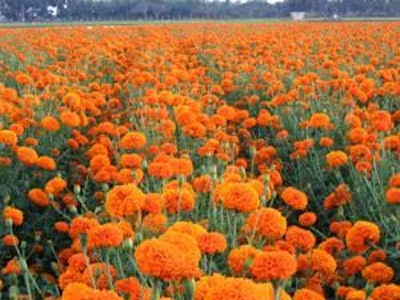
It is evident that adverse climatic conditions affecting the major areas producing marigold petals, the source of xanthophyll pigment, has affected the supply of commercial products.
Transition from an El Niño to a La Niña has resulted in droughts in many regions, including Southern China and Peru, which are the major producing areas. Although weather conditions have improved, the next crop from China is not due until the third quarter of this year, but the crop from South America will harvested in late May.
An added complication is that the price of cotton has increased very sharply and many producers of marigold in Southeast Asia have switched to cotton and other commodities, which offer a higher return. It is also expected that speculators are holding stocks from 2010 to take advantage of the increase in price for both crude marigold petal and oleoresin extracted from the raw material.
Effect on marigold prices
Demand for pigmenting agents, especially for aquaculture in Southeast Asia, has risen shapely competing with the poultry and food industries for available product. Fortunately, products derived from algae are becoming available for aquaculture, but it is not anticipated that this source of pigments will have any effect on marigold prices until 2012.
Some large U.S. importers and distributors of feed additive pigment used for specialty eggs have been able to hold prices to date but their inventories are now depleted and an escalation in price is inevitable.


















